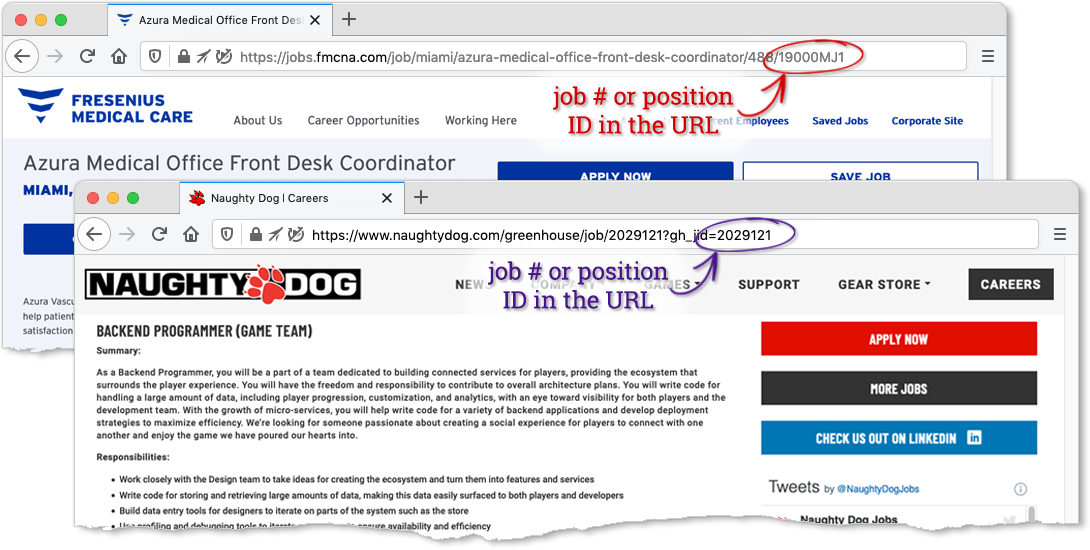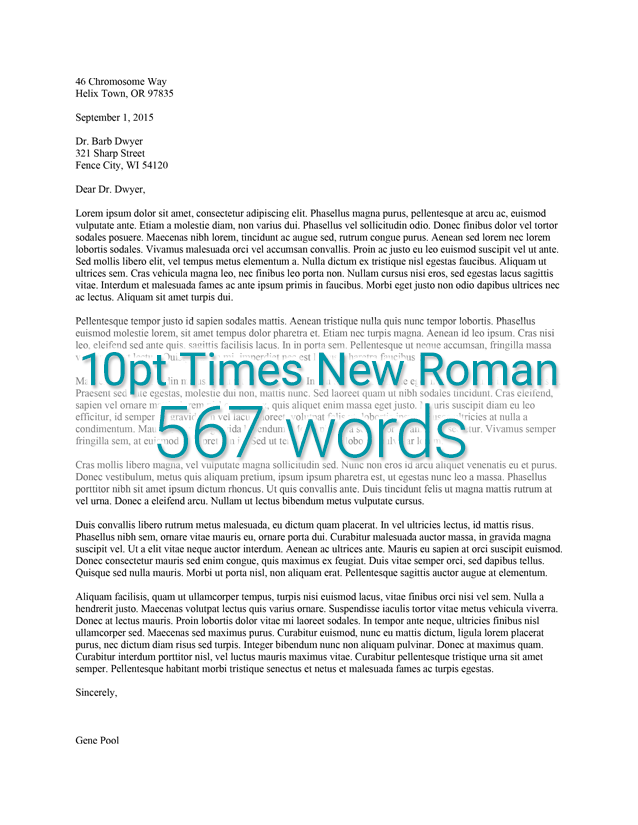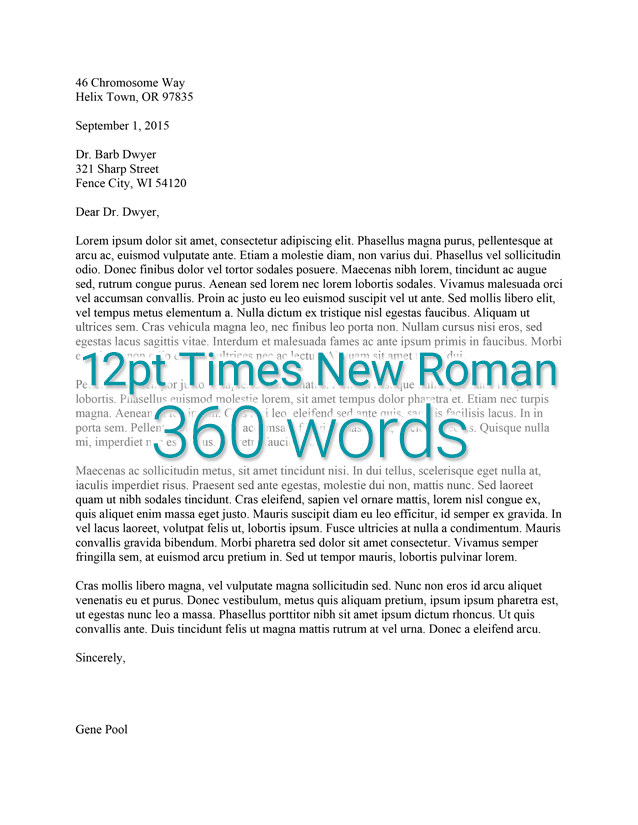Cover Letters: Frequently Asked Questions
- The job application I’m using says to copy my cover letter into a submission box / write my cover letter in the body of an email. What should I do for this project?
- Can I use a cover letter template?
- Does my cover letter need a recipient’s address?
- What if I can’t find the address?
- Who do I address my cover letter to?
- What if I can’t find the name of a recipient?
- What if I can’t find a position number or job ID number?
- I don’t have any paid experience in my career field. In my cover letter, can I talk about experiences I had in school?
- Can I discuss personal information in my cover letter?
- How should I format my cover letter?
- How long should be cover letter be?
Frequently Asked JSP Cover Letter Questions
Q. The job application I’m using says to copy my cover letter into a submission box / write my cover letter in the body of an email. What should I do for this project?
A. For the purposes of the Job Search Portfolio project, you should write your cover letter as a traditional, print cover letter for postal mailing. Need help with letter formatting?
Q. Can I use a cover letter template?
A. No. You may not use a cover letter template of any kind. If you use a template, use a fill-in-the-blank sample, use a cover letter generator, borrow phrasing or sentences from a text you didn’t write, or try to game the system some other way, you will get a 0% on the Job Search Portfolio project.
It has happened before. Don’t let it happen to you.
Q. Does my cover letter need a recipient’s address?
A. Yes. Your cover letter should look like a letter, and letters include a recipient’s name and address. You should look for this information online—try to find a postal mailing address for the company or branch, and try to find the real name of a person who would likely review your materials (a supervisor’s name, an HR person, etc.)
Q. What if I can’t find the address?
A. You should be able to find some address. If you can’t find the address to a particular division of a company, use their corporate or head office address instead.
Q. Who do I address my cover letter to?
A. You should try to find the name of a person who would likely review your materials if you were really applying (a supervisor’s name, an HR person, etc.).
Q. What if I can’t find the name of a recipient?
A. If you absolutely cannot find the name of any person who would be likely to review your materials (if you were really applying), then use the next best piece of information you have to use in your salutation. See “Salutations, Names, Titles, and Closings.”
- If you don’t know a person’s name or gender, if possible, use the their job title or role (Dear Recruiter, Dear Claims Adjustor).
- If you are writing to a company rather than a specific individual, use the company name (Dear Pet Smart, Dear E.J.’s Garden Pros).
- When writing to a group, use an appropriate plural noun (Students, Employees, Customers). When appropriate, use a more direct, descriptive, or friendly plural noun (Hello 3213 Pro Writers, Dear FAU Employees, Dear Initech Team)
- Don’t ever write: “To Whom it May Concern”
Q. What if I can’t find a position number or job ID number?
A. Look in the listing URL—often the URL has a position number or job ID number at the end. See below.

Q. I don’t have any paid experience in my career field. In my cover letter, can I talk about experiences I had in school?
A. Yes! Absolutely!
The work you’ve done as an undergrad is work. Your classroom experiences are experiences. The projects you’ve completed for class are projects. The research you’ve done for classes is research. Your educational experiences are worth highlighting, especially if you don’t have paid experience in your field.
Always keep in mind that your cover letter, resume, and interview responses are intended to “prove” your qualifications for the position. What matters is the experiences, projects, and research that qualify you. It doesn’t really matter whether those experiences, projects, and research are paid or unpaid (or “work” or “educational”).
Q. Can I discuss personal information in my cover letter?
A. Only if it applies to the position in some way.
Some examples:
You grew up in a military family and lived in six different countries before your father retired from the military and settled in Florida. Should you discuss this in your cover letter?
You lived with and helped your aunt while she battled breast cancer—you took her to chemo, cooked her meals, ran errands, and helped to clean her house. Should you discuss this in your cover letter?
Q. How should I format my cover letter?
A. You should format your cover letter as a professional letter in block format.
Q. How long should my cover letter be?
A. For the Job Search Portfolio Project, your cover letter should be one full page (your cover letter should be formatted as a letter, so it should be singled spaced with an additional space between paragraphs).
Aim to write at least one full page. (While I don’t count words, I’d prefer a cover letter that goes over one page instead of one that goes under one page.)

A note about font and font sizes:
Sometimes when I read cover letter drafts, it’s clear the author is trying to make their text look longer—trying to make it fill more of the page without actually writing more words. The easiest (and most obvious) way to make a text look longer is to use 12 point Arial font.
First, technically, you should use a common, readable serif font for body text on printed pages. Serif fonts—like Times New Roman—are often considered better than sans-serif fonts for readability, speed, and comprehension. (See Arditi and Cho).
Second, using 12pt Arial font isn’t fooling anyone (especially not someone who is reading a stack of cover letters and can plainly see the difference between a page printed in 10pt Times New Roman and one printed in 12pt Arial). To illustrate the effect of size and font style on words per page, take a look at these four mock cover letters. Each version has 1 inch margins, single spacing with an extra hard return (or extra space) between paragraphs, and the same addresses, salutation, and signature block. The body text of each version uses automatically generated Lorum Ipsum placeholder text.
With 10pt Times New Roman, the word count of the body text is 567. With 12pt Arial, the word count is 313. In other words, the per page word count with 10pt Times New Roman is more than twice the word count with 12pt Arial.
Since your cover letter is an opportunity to make an argument for why you’re an excellent candidate for the position, you should aim for quality and completeness. Usually, this takes people at least a page.
When I grade, I’m evaluating your rhetorical approach—I’m looking for quality and comprehensiveness. I’m looking to see whether you’ve made a compelling argument for yourself as an excellent candidate for the position.
Bottom line? While I don’t count words, please don’t think you’ve fooled me into thinking you’ve written a whole page by putting your cover letter into 12pt Arial font.
 |
 |
 |
 |